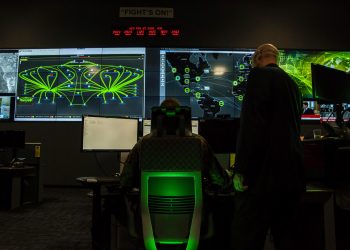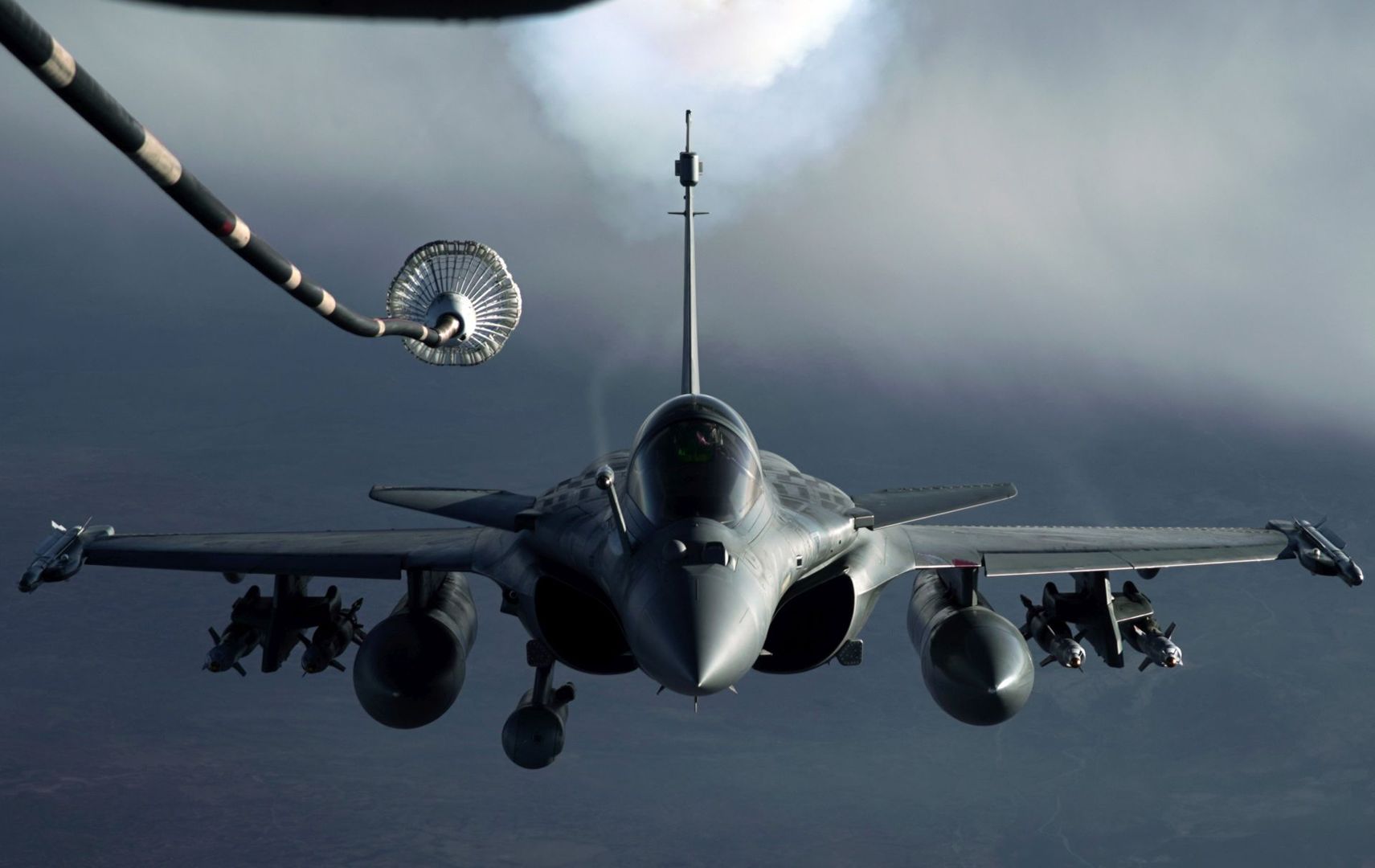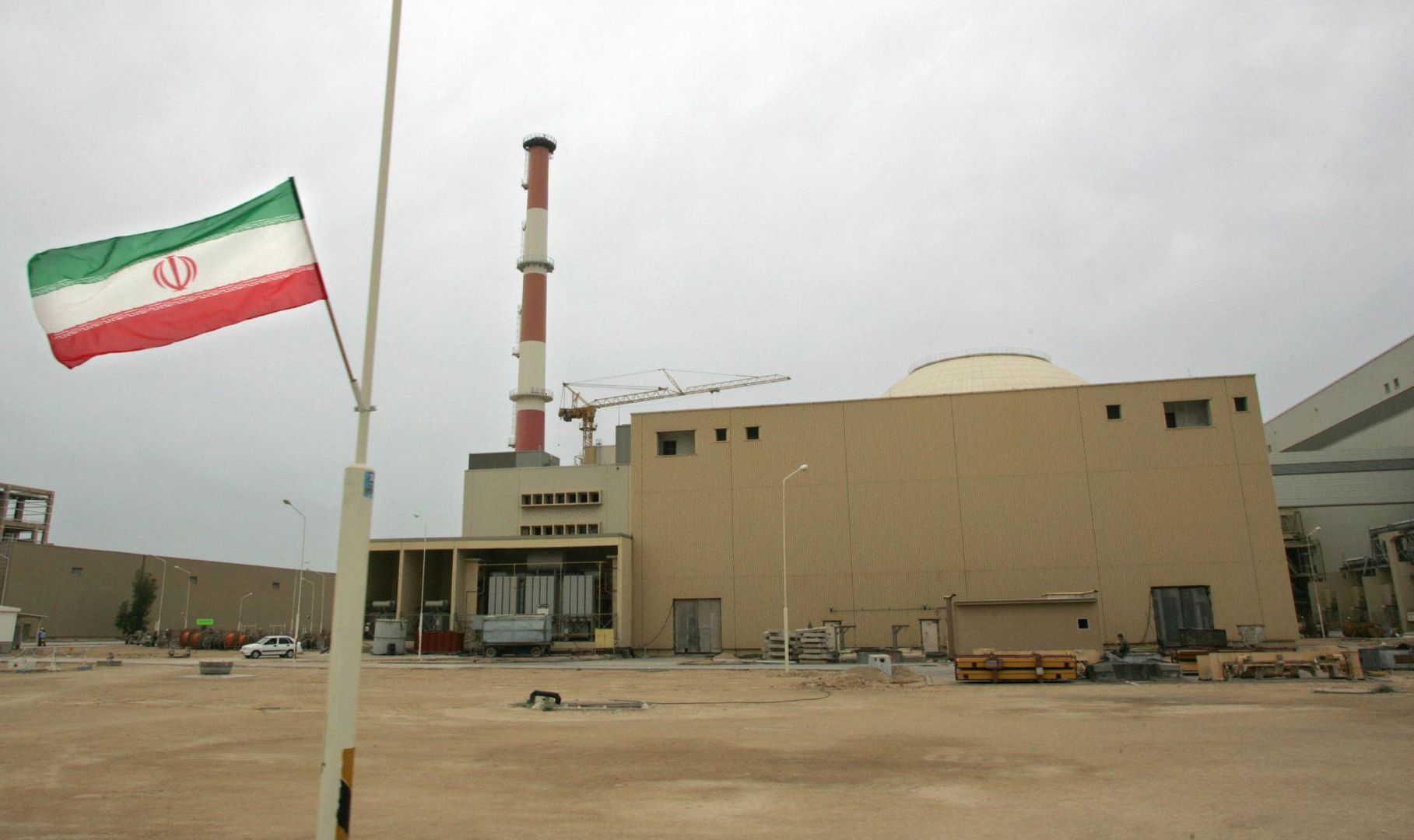VANDENBERG AIR FORCE BASE, Calif.: For the troops on the ground in hot zones all around the world, there are many items they rely on that are vital in their day-to-day operations: their weapons, their wingmen, their body armor. But what about their space assets?
The Defense Department’s space assets don’t always come to mind as key items in the daily operations of the commander on the ground in operational areas like Iraq and Afghanistan. And perhaps no other unit has as much of a direct affect on those operations than the Joint Space Operations Center, or JSpOC, here.
The JSpOC is a busy mix of U.S. servicemembers from the Air Force, Navy, Army and Marines; foreign service members from Australia, Great Britain and Canada; and a select group of civilian counterparts, who provide a focal point for the operational employment of worldwide joint space forces. These are the people who enable the commander of the Joint Functional Component Command for Space to integrate space power into global military operations.
“We provide operational command and control for the space forces that are assigned to the Joint Functional Component Command for Space in (U.S. Strategic Command),” said Col. Richard Boltz, the JSpOC director. “We provide the overall guidance, direction and execution of the space mission through the Joint Space Operations Center.”
And while many of those requests come from STRATCOM, many actually come directly from commanders in the field.
“We obviously receive tasks directly from STRATCOM,” Colonel Boltz said. “However, we have relationships set up with directors of space forces in each one of the combatant commands, and, often times, the request for space support within a theater will typically come from (a lieutenant colonel) or (a colonel) out in the field directly to the JSpOC asking for a specific service. We’ll answer the request however it may happen to come to us.”
“I work with the different geographic commanders and their space liaisons and make sure that they receive whatever they need in regards to space,” said Tech. Sgt. Jonathan Drayer, a space operations duty officer. “We will take what we do and tinker it to fit the need that the commander may have for any particular mission. Whether it’s GPS or communications satellites, instead of just making sure it’s up and running, we try to maximize the potential of those assets.”
One of the most common requests to the JSpOC has to do with GPS. Most people think they can simply turn on their GPS unit and everything will be fine. However, GPS systems are sensitive to things like the number of GPS satellites in view. And, while many people wouldn’t notice or could simply wait out a problem, the military GPS units are much more relied on and need to be extremely accurate when called upon.
“There are aircraft out there with older GPS navigation units on them and they will have specific GPS needs like how many satellites are in view,” Sergeant Drayer said. “We will do a prediction for them saying, ‘If you are flying this route with this aircraft, at these waypoints, your GPS navigation system will operate properly.’ This way the pilots know whether or not they can use their GPS as a navigation tool or not.”
When not working directly with the warfighter, JSpOC operators also work 24-hours per day monitoring the more than 19,000 pieces of space debris currently orbiting the planet. This particular mission led to their direct involvement in one of the most high-profile operations they have been a part of to date: Operation Burnt Frost. This nationally publicized event thrust the JspOC to center stage of the national media.
In this operation, a non-functioning National Reconnaissance Office satellite had lost power and began making its gradual decent out of orbit. While many items fall out of orbit and make the rapid decent back toward earth, most of those items never make it all the way to the ground. This particular, rather large satellite, however, would not burn up completely in the atmosphere, and due to the fact that it failed shortly after launch, it had a nearly full tank of hydrazine, a particularly hazardous material used as a fuel source on the satellite.
For this mission, the JSpOC operators provided command and control for the global network of sensors known as the Space Surveillance Network to track the satellite’s movements. They also assessed the solar environment’s effects on the Earth’s atmosphere, which impacts how a satellite’s orbit decays. All of the information gathered was then shared with each agency involved in the operation.
“The Aegis missile system didn’t have radar track of the satellite when it launched its missile,” Colonel Boltz said. “It was launching to a specific point in space where the satellite was predicted to be at a specific time. Our sensors had been tracking that satellite and our operators were the ones who provided that point in space to shoot at. They provided the target quality positional data of where that satellite was expected to be, which enabled the Navy to shoot, in the blind essentially, to that specific point.”
And while the JSpOC team played an integral role in the destruction of the wayward satellite, the job didn’t stop there. The destruction added approximately 150 more pieces of space debris to the more than 19,000 already tracked.
The JSpOC has come a long way since its activation in May of 2005. And the unit will continue to strive for success in its support of all space-related DOD functions while still growing into its full potential in the coming years.
“Anything that we can provide to help out the troops in a war zone, that’s what we’re here for,” Sergeant Drayer said. “I personally take pride in what I do while I’m doing what I can to support the guys out there living in the dirt, roughin’ it. The guys trying to talk on the radio having problems because at certain times of the day the atmosphere messes with their radio communications, that’s the important stuff. Those guys need to be able to count on their communications and GPS. They expect it to be there. They don’t get up in the morning and say, ‘I hope it’s working today.’ It’s important for us to do what we can to ensure they have what they need.”








